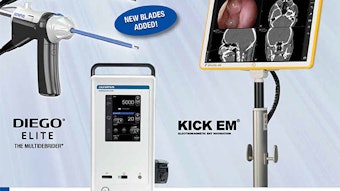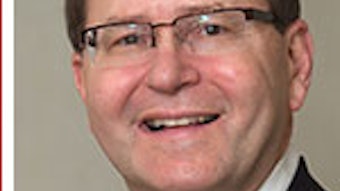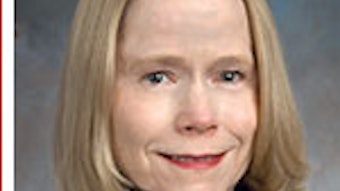What the final CY 2015 Medicare Physician Fee Schedule means for you
On October 31, 2014, the Centers for Medicare & Medicaid Services (CMS) posted the final Medicare physician fee schedule (MPFS) for calendar year (CY) 2015. Several key provisions of the MPFS positively affect otolaryngologists.

On October 31, 2014, the Centers for Medicare & Medicaid Services (CMS) posted the final Medicare physician fee schedule (MPFS) for calendar year (CY) 2015. Several key provisions of the MPFS positively affect otolaryngologists. While the final rule included several positive provisions, the Academy remains concerned regarding CMS’ decision to affirm policies that have the potential to negatively influence the specialty. Some of the key provisions Members should be aware of from the final rule include:
Medicare Sustainable Growth Rate (SGR)
Within the final rule, CMS projects that the conversion factor (CF) for the first three months of CY 2015 would be $35.8013 (compared to the 2014 CF of $35.8228). This estimate is based on a zero percent update (through March 31, 2015, as provided under the Protecting Access to Medicare Act of 2014 [PAMA]) and the adjustments necessary to maintain budget neutrality for the policies adopted in this final rule. CMS applies this CF to all of CY 2015 for purposes of completing its regulatory impact analysis, however, absent further Congressional action, a Medicare Sustainable Growth Rate (SGR)-induced reduction of more than 20 percent would occur on April 1, 2015 (CF of $28.2239).
As in previous years, we are hopeful that Congress will take action to avoid the impending cut due to the SGR before the March 31, 2015, deadline.
Estimated overall influence on total allowed charges for ENT services
The overall influence of the CY 2015 final rule for otolaryngology–head and neck surgery is zero percent. It is important to note that the estimate does not include the proposed reduction attributable to the SGR absent a Congressional fix prior to March 31, 2015, and is not necessarily reflective of changes that may occur among families of codes within any given specialty designation.
Establishing RVUs for 2015
While the overall impact is zero percent, the Academy is pleased to announce that as a result of our advocacy and comments on the 2014 final MPFS rule, we were able to obtain increases for eight ENT services for CY 2015, including increased values for rigid esophagoscopy, TNE, and some flexible esophagoscopy codes. Additionally, for all services the RUC surveyed in the CY 2014 cycle, CMS affirmed the RUC valuation. More specifically, CMS affirmed the RUC recommended value for Endoscopic Zenker’s Diverticulum and VNG codes. For additional payment policy and RVU details, view our RUC summary at http://www.entnet.org/sites/default/files/ruc_summary_of_2015_ final_mpfs.pdf.
Practice expense
CMS revisited its CY 2014 proposed policy to limit the nonfacility PE RVUs for individual codes so the total nonfacility PFS payment amount would not exceed the total combined amount that Medicare would pay for the same code in the facility setting. CMS continues to believe there are various possibilities for leveraging the use of available hospital cost data in the PE RVU methodology to ensure that the relative costs for PFS services are developed using data that is auditable and comprehensively and regularly updated. Although CMS include details about this policy in final rule, agency representatives have indicated to specialty society staff that it is likely to be included in the CY 2016 MPFS proposed rule.
Valuation of the global surgical package
Members should be aware that within the 2015 final rule there is a major change to reporting global surgical procedures. CMS finalized a two-year transition of all 010 (by 2017) and 090 (by 2018) global services to a 000 global. CMS is scheduled to begin this transition by February 2016, but does not have a methodology for operationalizing the transition. In the rule, CMS encourages stakeholders to provide input and/or recommendations for the best method. This policy, coupled with the aggressive timeline, has a number of potential consequences, and because of such the Academy is advocating for rescission or at least a delay. As part of the surgical coalition, we sent a letter (dated December 2, 2014) to Congress urging repeal of this policy and in our final comments (submitted December 30, 2014) we reiterated our concerns. The Academy then attended the Surgical Coalition meeting on January 12, 2015. We will continue to advocate on this issue and will keep members apprised of all pertinent information.
Potentially misvalued services
CMS identified 10 additional potentially misvalued codes relevant to otolaryngology, using a new screening process that targets codes the typical identification process overlooks. However, within the final rule, CMS rescinded this screen as a result of their decision to finalize the transition of all codes to 000 globals by 2018. Rather, they directed that the RUC should focus their efforts on how to operationalize that policy change, and delayed this screen and review of associated codes to a time uncertain.
Physician Quality Reporting System (PQRS)
Within the final rule, CMS addressed proposals regarding PQRS measures for 2015 and beyond. More specifically, the perioperative measures group has been removed as a reporting option, although CMS has retained several of the individual perioperative measures, which will continue to be available for PQRS in 2015 via claims and registry reporting options. Further, CMS has included additional measures groups that directly benefit otolaryngologists. The Academy is pleased that, as a direct result of its advocacy efforts, measures groups for sinusitis and acute otitis externa (AOE) have been newly added for PQRS reporting. In 2015, members may report via the Asthma, Sleep Apnea, Sinusitis, or AOE measures groups. Members should consider reporting via the PQRSwizard. Information is available at http://www.entnet.org/content/pqrswizard. See Table 1 for a brief synopsis of some of the changes made.
| New Individual Measures | Individual Cross- Cutting Measures | Measures with NQS Domain Changes | Measures Removed in 2015 | Changes to how Measures can be Reported | Changes to Measure Groups | Changes to GPRO Measures |
| CMS has added 20 measures in CY 2015. | CMS has finalized the inclusion of 19 measures in the cross- cutting measures set. | CMS has changed the NQS domain for 23 measures. | CMS has removed 50 measures. | CMS has changed the way 33 measures are reported. |
CMS has increased the required minimum number of measures in measures groups from 4 to 6. As a result of Academy Advocacy, CMS has added 2 new measures groups: Sinusitis and AOE. CMS has removed 6 measures groups, including perioperative care. |
CMS has added 4 measures to GPRO and removed 4 measures. |
CMS also finalized several other proposals, including changes to the 2017 payment adjustment, criteria for individual reporting, changes to individual reporting requirements, and changes to group practice reporting requirements. Members are encouraged to review the Academy’s final rule summary to ensure they are prepared for these important adjustments.
Value Based Payment Modifier (VM)
The VM assesses both quality of care furnished and the cost of care under the MPFS. CMS began with a phase-in of the VM in 2015 and will apply to all physicians by January 1, 2017. Implementation of the VM is based on participation in PQRS. In 2015, CMS is expanding the application to groups between two and nine EPs groups and solo practitioners, but will hold harmless from a VM penalty if they participate in PQRS even if they do not meet reporting requirements. See Table 2. For specifics on 2015 VM requirements, additional information is available on the Academy website at http://bit.ly/entVBPM.
Table 2. 2015 VM changes
| PERFORMANCE YEAR /VM YEAR | SIZE OF PRACTICE | PARTICIPATE IN PQRS | VM OUTCOME |
| 2015 /2017 | Solo practitioners and groups with 2-9 EPs | Yes (Category 2) |
Neutral or incentive* (+2.0%) (Depending on quality tiering) |
| Solo practitioners and groups with 2-9 EPs | No (Category 1) |
-2.0% penalty | |
| 10+ | Yes (Category 1) |
-2.0% to -4.0% penalty neutral or incentive* (+2.0% to +4.0%) (Depending on quality tiering) |
|
| 10+ | No (Category 2) |
-4.0% penalty | |
| *Groups and solo practitioners receiving an upward adjustment are eligible for an additional +1.0 percent if their average beneficiary risk score is in the top 25 percent of all beneficiary risk scores nationwide. | |||
Physician compare
As Members know, CMS was required to develop a Physician Compare website with information on physicians enrolled in the Medicare program. Using a phased-in approach, CMS also publicly posts information on EPs and their participation with the PQRS program. Within the CY 2015 MPFS final rule, CMS finalized several proposals, including, but not limited to: 1. Publicly reporting all 2015 PQRS measures for individual EPs collected through a registry, EHR, or claims; and 2. Publicly report all 2015 PQRS Group Practice Reporting (GPRO) measures reported via the web interface, EHR, and registry for group practices of two or more EPs and all measures reported by ACOs with a minimum sample size of 20 patients. Additional finalized proposals are outlined in detail in the Academy summary of the 2015 final MPFS rule.
More information
Members are encouraged to review the detailed summary of the final rule. Both the summary and final comments are located on the Academy’s Regulatory Advocacy page at http://www.entnet.org/content/advocacy. Please contact the Health Policy unit with questions at http://www.entnet.org/content/practice-management-tool.















